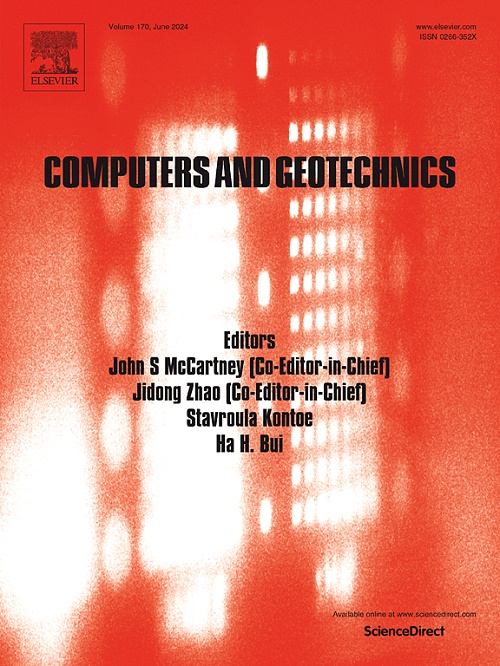Numerical modelling of geological processes as means for the diagnosis of ancient landslide mechanisms
IF 5.3
1区 工程技术
Q1 COMPUTER SCIENCE, INTERDISCIPLINARY APPLICATIONS
引用次数: 0
Abstract
The occurrence of deep paleo-landslides in marine clays is a well-documented phenomenon in multiple slopes within the south-eastern Italian Apennines and their associated foredeep basin. To accurately diagnose the mechanisms occurring in such landslides, a comprehensive numerical simulation of the processes leading to the initial slope failures is essential. This approach is only feasible when the geological history of the soil deposit has been meticulously evaluated.
This paper presents a methodological procedure adopted to assist in diagnosing the current activity of a slow-moving, deep-seated ancient landslide using hydro-mechanical modelling. To investigate the processes leading to the initial slope failures, elasto-plastic finite element simulations have been conducted. These simulations aim to replicate the geological processes that the slope has experienced, which are identified as the key contributors to the landslide’s inception. The application of this numerical modelling procedure has proven to be a valuable diagnostic tool, enhancing the understanding of the ancient landslide mechanism and providing insights into its current features, such as the position of the toe, landslide depth, and style of movement.
地质过程的数值模拟作为诊断古滑坡机制的手段
在意大利东南部亚平宁山脉及其相关的前深盆地内的多个斜坡中,海相粘土中发生深部古滑坡是一个有充分文献记载的现象。为了准确诊断此类滑坡发生的机制,对导致初始边坡破坏的过程进行全面的数值模拟是必不可少的。这种方法只有在对土壤沉积物的地质历史进行了细致的评估后才可行。本文提出了一种方法程序,采用水力学模型来帮助诊断缓慢移动的深层古代滑坡的当前活动。为了研究导致边坡初始破坏的过程,进行了弹塑性有限元模拟。这些模拟旨在复制斜坡所经历的地质过程,这些过程被认为是滑坡开始的关键因素。该数值模拟程序的应用已被证明是一种有价值的诊断工具,增强了对古代滑坡机制的理解,并提供了对其当前特征的见解,如脚趾的位置,滑坡深度和运动风格。
本文章由计算机程序翻译,如有差异,请以英文原文为准。
求助全文
约1分钟内获得全文
求助全文
来源期刊

Computers and Geotechnics
地学-地球科学综合
CiteScore
9.10
自引率
15.10%
发文量
438
审稿时长
45 days
期刊介绍:
The use of computers is firmly established in geotechnical engineering and continues to grow rapidly in both engineering practice and academe. The development of advanced numerical techniques and constitutive modeling, in conjunction with rapid developments in computer hardware, enables problems to be tackled that were unthinkable even a few years ago. Computers and Geotechnics provides an up-to-date reference for engineers and researchers engaged in computer aided analysis and research in geotechnical engineering. The journal is intended for an expeditious dissemination of advanced computer applications across a broad range of geotechnical topics. Contributions on advances in numerical algorithms, computer implementation of new constitutive models and probabilistic methods are especially encouraged.
 求助内容:
求助内容: 应助结果提醒方式:
应助结果提醒方式:


